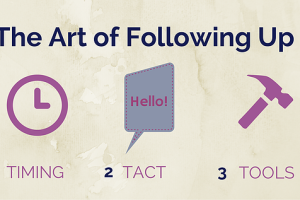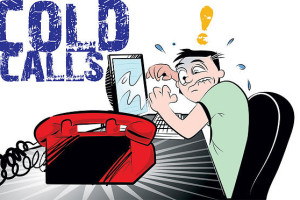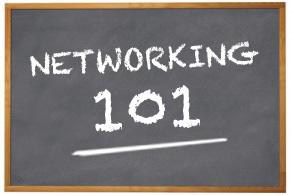We’ve all been there before. A prospective customer has been listening attentively as we explain our product’s features and cutting-edge advantages over our competitors. We’re CONVINCED our product is a perfect solution for the customer’s problem, and WE KNOW we just delivered the smack down of all smack down sales presentations.
But then, we move in for the close, only to come face to face with those dreaded customer objections…
“That’s out of our price range right now.” Or, “That sounds good on paper, but I’m not sure we’re going to see that kind of benefit here.” Or maybe, “I see the value, but I just don’t think we’re ready to make a decision right now.”
Objections like these demoralize 95% of sales people. But I’m here to tell you that they should not… (not in the very slightest).
Why?
Because questions like those above are organic parts of the sales process. You should look forward to them – objections indicate interest. Successful sales have twice as many objections as unsuccessful sales.
In other words, if you’re able to effectively handle customer resistance, you have a much better chance of closing on the deal than when you receive no objections in the first place.
Let’s talk about how to handle customer objections in 4 easy steps.
Anticipate
The easiest objections to deal with are the ones that never come up… not because the customer doesn’t have any objections, but because our marketing materials have already anticipated and addressed them up front (not an easy feat).
While you may not be a marketing whiz, if the shots can be called, I would recommend crafting a marketing package that mimics the sales process itself—presenting features while explaining the problems they solve, raising potential objections in a positive manner and then pairing them with solutions and customer testimonials.
By the time you actually get to the pitch stage, you’ll have already defused the most potent objections; and should one of them still come up, you’ll have a terrific starting point for an elaborative conversation that keeps the ball rolling in a positive direction.
But that’s all just a fantasy for the sales guys of the world… after all; we can’t assume every client has the same objections.
What you need to do though, if you really want to succeed (and you should) that if you do your homework then nothing said during a sales meeting should catch you off guard.
Assess
We can learn from Brian Jeffrey who protest the use of the word “objection” to describe most of the resistance we receive from customers.
Why?
Precisely because, as he puts it, “By treating what is often considered objections as simple requests for more information or clarification, you can reduce the stress of the situation and keep your sales process moving.”
WRITE THAT DOWN… because too often we hear a prospect voice an objection and we assume that the discussion is over—that the best thing we can do is politely bow out and move on to the next prospect.
Admittedly, this may sometimes be the case, especially if we’re dealing with one of those “uninformed customers who throw roadblocks in your way because they simply aren’t going to buy from you no matter what.”
But more often than not, when a customer raises an objection, he or she is actually appealing for help resolving a difficulty with our proposal, or perhaps playing “hard to get” simply to retain a share of control in the process.
We owe it to ourselves and to our customers to accurately assess the real source of concern behind the objection and to determine whether it’s something that’s truly a deal-breaker or merely an obstacle that can be bypassed or overcome.
In my experience, I’ve learned that good customer discovery always focuses on asking open-ended questions… Open-ended questions keep the conversation moving further and deeper.
Experts say that it takes at least 4-5 layers of questions to really uncover the pain or nature of the objection… 4-5 ‘layers’ of questions (let’s hope if you’re reading this you haven’t given up yet).
You must be strategic though in your phrasing of the actual question… the goal: NEVER trigger a flat ‘no’ response. Once prospects have said ‘no,’ they have a position to defend, and your job of persuading them to say ‘yes’ becomes MUCH more difficult.
Our goal in this phase of the objection-handling process is to get to the root of the issue so that we can deal with it authentically—NOT by glossing over it as though it’s no big deal, nor by overwhelming the prospect with a bunch of product features that suggest he or she is being sold more “solution” than his or her business requires.
Now listen, you’re not out of the woods yet – it actually get’s more difficult than that. The stated objection may or may not reveal the actual root issue. Some are fact-based: “Your prices are higher than your competitors.” Others are emotion-based: “I just don’t know. We tried this with another company and it was a nightmare.” And sometimes, regardless of the specific nature of the objection, all the customer is really saying is, “I don’t like being sold. I want to arrive at this decision on my own. Please back down.” Good customer discovery at this point is critical, or else we risk addressing the wrong concern, making ourselves appear insensitive and incompetent.
Address
Once we’ve zoned in on the prospect’s real concerns, we can begin addressing them, beginning with the one that looms largest as a potential deal-breaker. This takes more than a little art and seasoned tact. Only with practice and refined sales instincts will we learn to strike the proper balance between helpfulness and pushiness.
But there are some basic principles to consider.
With regard to fact-based objections, for instance, there may be times when the customer is ill informed or skeptical of our data. If this is the case, your next step is incredibly important. While it may be difficult, I’d suggest accepting the objection as “correct from the customer’s point-of-view.” It’s dangerous to do anything that might force a prospect into a defensive posture by suggesting that he or she is wrong.
A better approach is redirection—helping the customer see the issue from a different, value-added perspective. This is especially true when it comes to price.
As entrepreneur Mark Suster explains, “Experienced sales leaders seldom compete on price. They’ll discount, sure. But they want to establish a baseline in the customer’s mind of the value they will get by using their product.” In other words, when it comes down to plain numbers, the salesperson’s job is to redirect the conversation to expected value and ROI.
Emotion-based objections require us to reassure the customer that their objection should not be a concern to them. Assure that he or she understands the real nature of the objection demonstrating appreciation for the prospect’s concern by saying something like, “I understand how you feel, Mr. Smith. Scalability is something people don’t always consider carefully enough, and it comes back to haunt them later.”
Now, in order to demonstrate empathy while simultaneously shifting the attention away from the salesperson’s own interests, he or she proceeds to discuss previous successes. “Our clients at Acme Recruiting were worried about the same thing when they entered a big growth phase.” After elaborating on some of the details—demonstrating the relevance of the previous client’s situation to the prospect’s immediate concern—then drive the point home. “What they found is that our solution not only kept pace with their growth, but it actually helped streamline their record-keeping through the process, preventing a lot of duplicate entries and saving them dozens of man-hours parsing new information for accuracy.” And obviously this requires a data-driven culture that is invested and interested in quantifying the success of their past customers.
But what if we’re receiving the dreaded “I’m just not going to buy today” message from a customer? Well, that’s a different animal. When it’s clear that a prospect is not interested in having his or her objections addressed, we do well to gracefully bow out while we can still leave a good impression and demonstrate appreciation for his or her time. Who knows? Perhaps it will score us a referral or two.
Agree
Here’s where it’s easy to lose focus and drop the ball. Addressing objections only makes progress toward a sale if we arrive at a place of concurrence with the prospect. And that concurrence must be about securing agreement rather than securing mere submission.
If all we’ve done is silence the objection without truly satisfying the prospect’s root concern, we’re no closer to winning the sale than we were before. If we move in to close at that point, the customer is more likely to feel bullied than cared for. A truly empathetic salesperson actually asks whether the customer feels his or her concern has been sufficiently addressed before moving on.
If the customer says yes, this becomes a strong basis for closing. If the answer is no, it becomes an opportunity to seek clarification, reassess, and perhaps attempt a different approach.
Effectively handling objections keeps the conversation going even when the customer is trying to put on the brakes. None of us wants to bully a prospect into a disadvantageous sale, but there are consequences for retreating prematurely.
At the very least, we miss out on a valuable learning opportunity—a chance to garner market insights that can better inform future sales approaches. But perhaps more importantly, by cutting the conversation short, we forfeit our chance to discover just how close to netting the sale we might have been in the first place.








